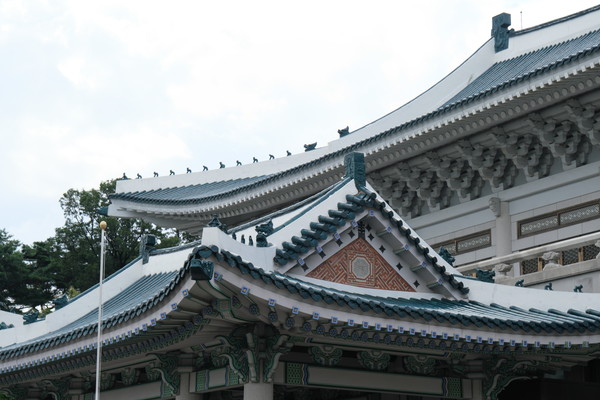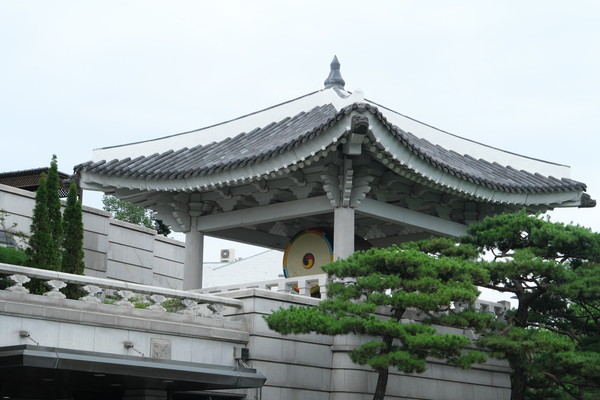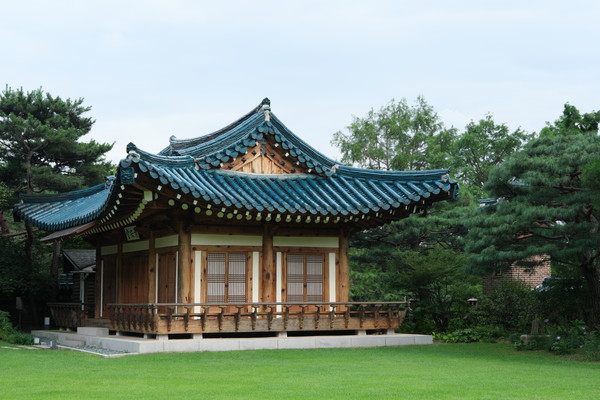The unveiled presidential residence kept secret for 75 years

AFTER BEING closed off for 75 years, the Blue House was finally unveiled to the public on May 10. Also known as Cheong Wa Dae, the Blue House served as the South Korean presidential office since the first president of South Korea, Rhee Syng-man, was elected in 1948. The location was closed off to the public in 1968; since then, some presidents allowed a small portion of the Blue House to be opened to a limited number of citizens under high restrictions, but a full-scale public opening never took place in history. The unveiling of the Blue House in May was followed by President Yoon Suk-yeol’s campaign promise to move the presidential office to Yongsan-gu, as he considers the Blue House a “symbol of imperial power[1].” Since its public opening, the Blue House garnered massive interest, with over 1.38 million people visiting the presidential office in the first 78 days of accessible entry[2]. The Yonsei Annals was able to capture beautiful shots of the majestic monument that is Cheong Wa Dae.
The history of the Blue House
The Blue House was not always protected from public view since its construction. In fact, during Rhee Syng-man’s presidency, the building was publicly accessible for two or three days each year. This annual tradition lasted until the Blue House Raid in 1968, an event where North Korean commandos attacked the Blue House in an attempt to assassinate President Park Chung-hee. Even though the attempt failed, this incident signaled the fact that a strengthened security system was necessary, leading the government to permanently close off the Blue House from the public[3]. The long-standing mystery surrounding the building has, understandably, drawn the attention of many curious individuals who have been anticipating the day Cheong Wa Dae reopens to the public.
Three gates, three routes
To enter the Blue House, an individual must make a reservation on the official Blue House website, which requires a self-authentication process using one’s phone number. After the reservation is made, a link to a QR code—which is scanned at the entrance of the building—will be securely sent via text message.
There are three gates through which visitors can enter the Blue House: Yeongbin Gate, the main gate, and Chunchu Gate. Depending on which gate one enters from, the recommended tour route differs slightly. For visitors who enter through Yeongbin Gate, it is recommended to visit Yeongbingwan first, then the main building, followed by the presidential residence. For those that enter through the main gate and Chunchu Gate, it is recommended to visit the presidential residence first, then the main building and Yeongbingwan. Each course provides a unique outlook of the Blue House.

Yeongbingwan, the reception center
Even on a sweltering hot Monday, many families, couples, and tourists visit the Blue House, forming a long line in front of Yeongbingwan, the building that was used as a reception hall for foreign dignitaries visiting Korea. In order to preserve the carpets, all visitors have to wear coverings over their shoes before entering Yeongbingwan and the main building.
On the inside, Yeongbingwan’s decoration is delicate and refined, with five elegant chandeliers hanging down from the ceiling. The room is decorated as if a grand feast is about to take place, resembling the majestic ballroom of a royal palace.

The main building

The main building is where the offices of the president and the first lady are located, as well as Chungmusil and Inwangsil. When foreign head of states visited Korea, small feasts and joint press conferences were held in Inwangsil, while larger feasts and ceremonies were held at Chungmusil. Chungmusil, a room where large ceremonies were held, follows the same traditional style of Korean architecture as all the other rooms. Interestingly, however, Inwangsil—a Western style multi-purpose hall—is an exception to this architectural pattern. Additionally, Mugunghwasil, the first lady's office, also exhibits a different aesthetic layout, displaying pure white ornaments with emerald-green furniture, along with photographs of past first ladies lining the wall.
On the 2nd floor, the president’s office and reception room are located. The windows are made of han-ji[4], a traditional Korean paper, and the wall on the east is adorned with golden patterns that represent the ten symbols of longevity[5]. The traditional atmosphere of the rooms is complemented by furniture inspired by the Joseon Dynasty-era.

The presidential residence
People often think that the presidential residence is located inside the main building. However, the actual president’s accommodation is a ten-minute walk away. Visitors are not allowed to go inside the property, but going around the structure and looking through its windows remains unprohibited. Built in 1990 in a han-ok[6] style, the structure consists of a bedroom, reception room, dining room, gym, and a dressing room.
Near the presidential residence, large gardens, a heliport, ponds, and other historically valuable constructions are located. Notably, a Buddha statue from the 9th century stands right behind the presidential residence—this statue was originally situated in Gyeongju-si, but was moved by Japanese colonists during the Japanese Colonial Era. During special occasions, previous presidents would pay tributes to the Buddha statue and wish for good luck in their future endeavors. Cultural heritages such as Chimliugak—a traditional han-ok built in the early 1900s—can also be found within the Blue House property, providing visitors a glimpse of Korea’s historical past. There are also plenty of greeneries that liven up the premises of the Blue House. For example, Nokjiwon, the largest garden within Cheong Wa Dae, accommodates 100 different species of trees, with a 170-year-old pine tree standing tall in the center of the lush field.

* * *
The traditional architecture of the Blue House and its surrounding vegetation come together to create a palatial picture of South Korea’s political history. For those who want to see the harmonious joining of the old and the modern, Cheong Wa Dae would be the perfect place to visit.
[1] Bloomberg
[2]Yonhap News Agency
[3] Encyclopedia of Korean Culture
[4] Han-ji: A traditional handmade paper from Korea
[5] Ten symbols of longevity: The ten symbols of longevity include rocks, water, clouds, the sun, pine trees, turtles, deer, cranes, bamboo, and fungus; These symbols represent the desire for immortality and eternal youth.
[6] Han-ok: A traditional Korean house

